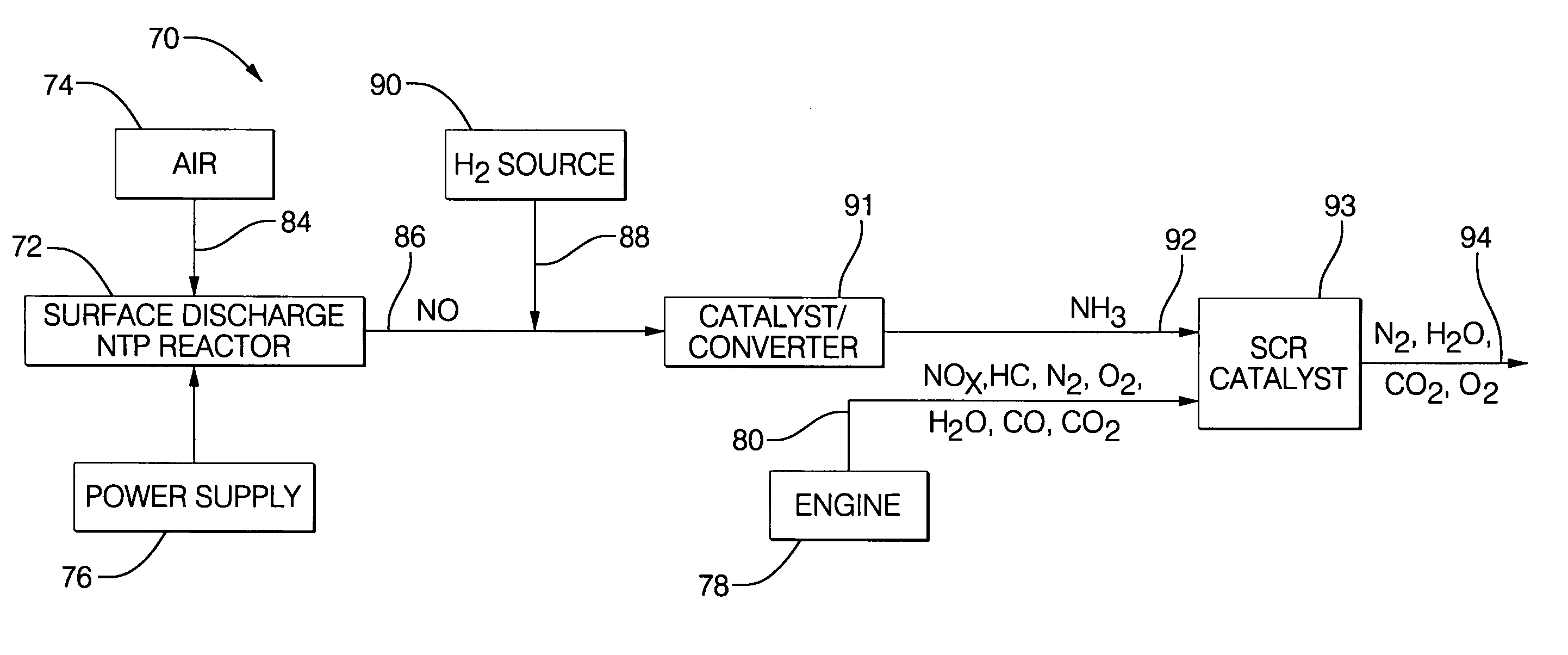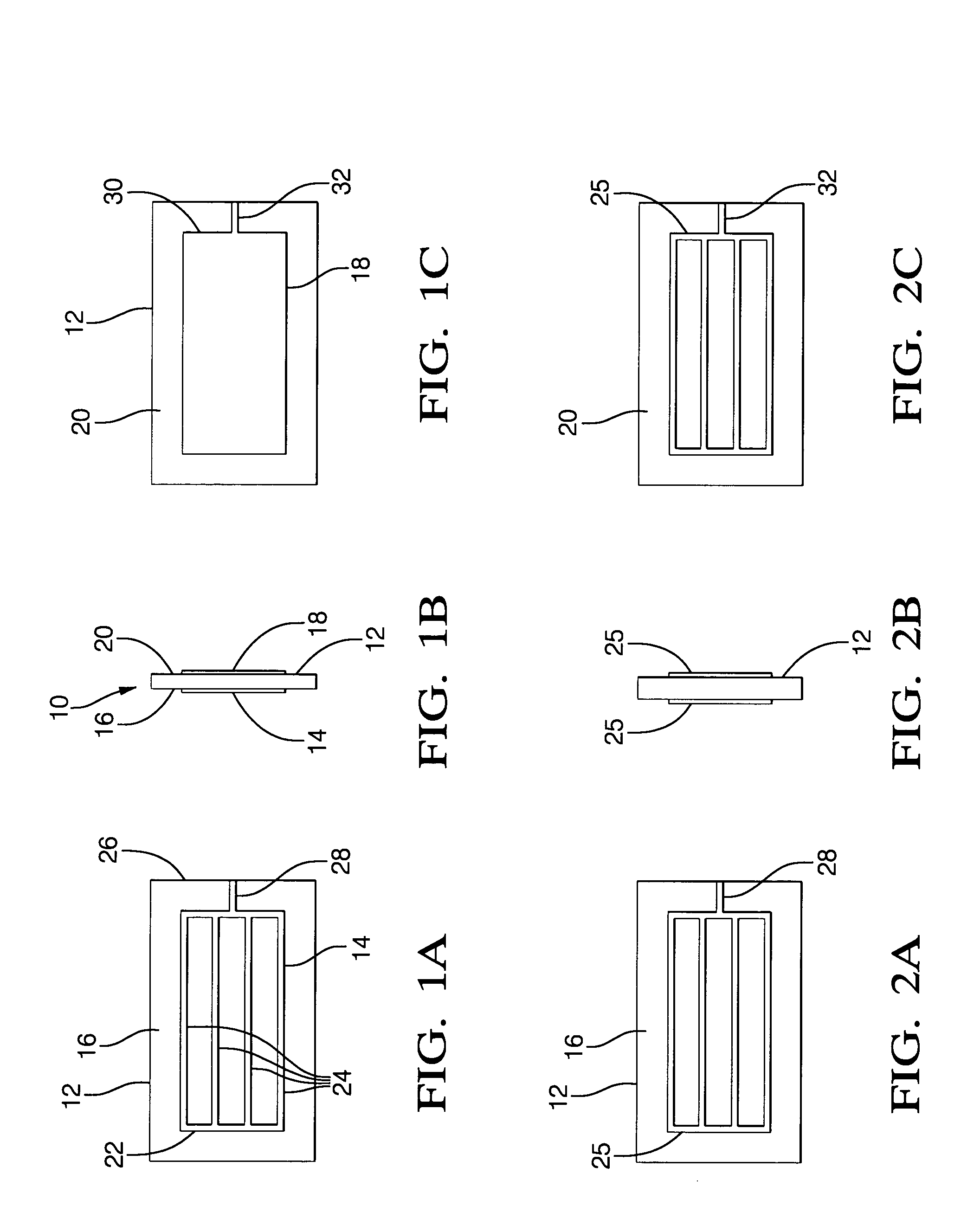Surface discharge non-thermal plasma reactor and method
a plasma reactor and surface discharge technology, which is applied in the direction of arsenic compounds, silicon compounds, separation processes, etc., can solve the problems of unsatisfactory need for improving conversion efficiency, undesirable compounds in the exhaust stream of combustion processes, and in the exhaust stream of internal combustion engines
- Summary
- Abstract
- Description
- Claims
- Application Information
AI Technical Summary
Benefits of technology
Problems solved by technology
Method used
Image
Examples
Embodiment Construction
[0053] Surface discharge non-thermal plasma reactors in accordance with the present invention use surface discharge to generate a high intensity electric field for treating a nitrogen-containing gas stream (e.g., air). During treatment, the nitrogen bond is dislodged to form nitric oxide (NO) which can be used to produce ammonia for an SCR catalyst treatment device. Turning now to FIGS. 1A, 1B and 1C, a representation of a substrate and electrode pattern configuration 10 in accordance with one possible embodiment of the present invention includes a dielectric substrate 12 having a first electrode 14 printed on a first side 16 of the dielectric substrate 12 and a second electrode 18 printed on a second opposite side 20 of the dielectric substrate 12. The electrode 14 is disposed in a mesh pattern 22 comprising a plurality of parallel conductive strips 24 connected at one side 26 to a terminal lead 28 for connecting to a first polarity electrical busline (not shown). The electrode 18 ...
PUM
| Property | Measurement | Unit |
|---|---|---|
| Polarity | aaaaa | aaaaa |
| Volume | aaaaa | aaaaa |
| Electrical conductor | aaaaa | aaaaa |
Abstract
Description
Claims
Application Information
 Login to View More
Login to View More - R&D
- Intellectual Property
- Life Sciences
- Materials
- Tech Scout
- Unparalleled Data Quality
- Higher Quality Content
- 60% Fewer Hallucinations
Browse by: Latest US Patents, China's latest patents, Technical Efficacy Thesaurus, Application Domain, Technology Topic, Popular Technical Reports.
© 2025 PatSnap. All rights reserved.Legal|Privacy policy|Modern Slavery Act Transparency Statement|Sitemap|About US| Contact US: help@patsnap.com



